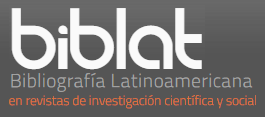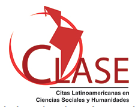Call of Cthulhu: the image of the lovecraftian creatures in the game Dark Corners of the Earth
DOI:
https://doi.org/10.5433/1679-0383.2019v40n2p225Keywords:
Lovecraft, Semiótica, Videogames, FenomenologiaAbstract
This article aims to study the image of three creatures - Shoggoth, Cthulhu and Dagon - based on the books of the writer H.P. Lovecraft and present in the game Call of Cthulhu: Dark Corners of the Earth. The main approach is from the perspective of the phenomenological categories and the semiotics of C.S. Peirce. Through the nine types of sign and the phenomenological categories of firstness, secondness and thirdness, an analysis of the visual components of the game images was made, compared to Lovecraft's writings. Through the semiotic analysis, it is noticed that the game succeeded in transposing fundamental signs of the Lovecraft's literature.Downloads
References
BYSTRINA, I. Tópicos de semiótica da cultura. São Paulo: Cisc, 1995. Pré-print.
DUTRA, D. I. O horror sobrenatural de H.P. Lovecraft: teoria e praxe estética do horror cósmico. 2015. 260 f. Tese (Doutorado em Literatura Comparada) – Universidade Federal do Rio Grande do Sul, Porto Alegre, RS, 2015.
FLUSSER, V. Filosofia da caixa preta: ensaios para uma futura filosofia da fotografia. Rio de Janeiro: Relume Dumará, 2002.
JOSHI, S. T. The weird tale. Seatle: Sarnath Press, 2017.
LOVECRAFT, H. P. A cor que caiu do céu. 2. ed. São Paulo: Iluminuras, 2007.
LOVECRAFT, H. P. A maldição de Sarnath. 2. ed. São Paulo: Iluminuras, 2001.
LOVECRAFT, H. P. Dagon. 2. ed. São Paulo: Iluminuras, 2005.
LOVECRAFT, H. P. O horror sobrenatural em literatura. São Paulo: Iluminuras, 2008.
LOVECRAFT, H. P. The complete fiction. New York: Barnes & Noble, 2011.
MORIN, E. O enigma do homem: para uma nova antropologia. Rio de Janeiro: Zahar Editores, 1975.
PEIRCE, C. S. Semiótica e filosofia. São Paulo: Cultriz, 1975.
PEIRCE, C. S. Semiótica. São Paulo: Perspectiva, 2003.
PEIRCE, C. S. The collected papers of Charles Sanders Peirce. Charlottesville, VA: Intelex Corporation, 1994.
PIRES, J. B. Vida e obra de Charles Sanders Peirce e as bases para o estudo da linguagem fotográfica. Revista Discursos Fotográficos, Londrina, v. 4, n. 4, p. 145-160, 2008.
RUIZ, M. F.; BIENVENIDO, H. P. Universos fantásticos de inspiración Lovecraftiana en videojuegos survival horror: Un estudio de caso de p.t (silent hills). Brumal: revista de investigación sobre lo fantástico, Barcelona, v. 3, n. 1, p. 95-118, 2015.
SANTAELLA, L. A assinatura das coisas: Peirce e a literatura. Rio de Janeiro: Imago, 1992.
SANTAELLA, L. A teoria geral dos signos. São Paulo: Pioneira, 2008.
SANTAELLA, L. Estética: de Platão a Peirce. 2. ed. São Paulo: Experimento, 1994.
SANTAELLA, L. O método anticartesiano de C. S. Peirce. São Paulo: Editora UNESP, 2004.
VALVE. Shoggoth. Disponível em: https://steamcommunity.com/sharedfiles/filedetails/?id=780930632. Acesso em: 1 out. 2016.
Downloads
Published
How to Cite
Issue
Section
License
Copyright (c) 2020 Semina: Ciências Sociais e Humanas

This work is licensed under a Creative Commons Attribution-NonCommercial 4.0 International License.
Semina: Ciências Sociais e Humanas adopts the CC-BY-NC license for its publications, the copyright being held by the author, in cases of republication we recommend that authors indicate first publication in this journal.
This license allows you to copy and redistribute the material in any medium or format, remix, transform and develop the material, as long as it is not for commercial purposes. And due credit must be given to the creator.
The opinions expressed by the authors of the articles are their sole responsibility.
The magazine reserves the right to make normative, orthographic and grammatical changes to the originals in order to maintain the cultured standard of the language and the credibility of the vehicle. However, it will respect the writing style of the authors. Changes, corrections or suggestions of a conceptual nature will be sent to the authors when necessary.

















